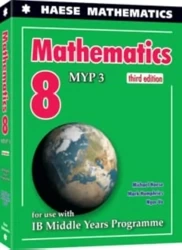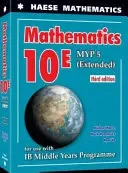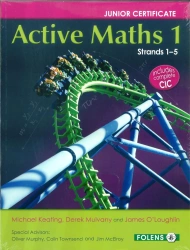Matematyka po angielsku
( ilość produktów: 61 )Książki obcojęzyczne - Matematyka : Angielski
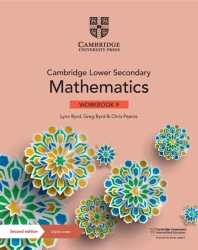
Cambridge Lower Secondary Mathematics Workbook 9 with Digital Access (1 Year) - Lynn Byrd, Greg Byrd, Chris Pearce
- Autorzy:

Pearson Mathematics for the Middle Years Programme Year 1 - Matteo Merlo, Diane Oliver, Kathren Pate, Michelle Shaw
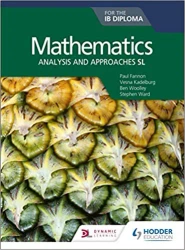
Mathematics for the IB Diploma: Analysis and approaches SL - Paul Fannon, Stephen Ward, Ben Woolley, Vesna Kadelburg

Mathematics 10 Standard. MYP 5 Standard. 3rd edition - Michael Haese, Mark Humphries, Ngoc Vo

Mathematics for the IB Diploma: Analysis and approaches HL - Paul Fannon, Vesna Kadelburg, Ben Woolley, Stephen Ward
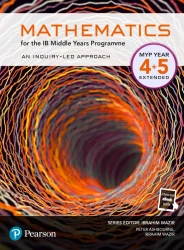
Pearson Mathematics for the Middle Years Programme Year 4+5 Extended - Peter Ashnourne, Ibrahim Wazir
- Autorzy:
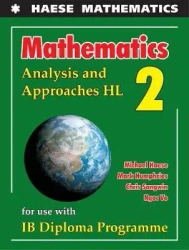
Mathematics: Analysis and Approaches HL - Michael Haese, Mark Humphries, Chris Sangwin

Pearson Mathematics for the Middle Years Programme Year 2 - Pearson Education Limited
- Autorzy:
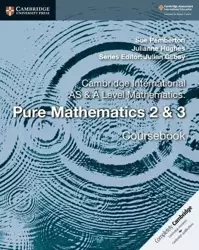
Cambridge International AS & A Level Mathematics. Pure Mathematics 2 & 3. Coursebook - Sue Pemberton, Julianne Hughes
- Autorzy:

Maths Progress International Year 8 Student Book - Katherine Pate, Naomi Norman, Nick Asker, Sharon Bolger, Gwenllian Burns, Greg Byrd

Maths Progress International Year 9 Workbook - Greg Byrd, Keith Pledger, Keith Gallick, Catherine Murphy, Su Nicholson, Diane Oliver

Maths Progress International Year 7 Workbook - Keith Gallick, Greg Byrd, Sophie Goldie, Keith Pledger, Catherine Murphy, Su Nicholson

Maths Progress International Year 7 Student Book - Katherine Pate, Naomi Norman, Nick Asker, Sharon Bolger, Gwenllian Burns, Greg Byrd

Pearson Edexcel International A Level Mathematics Further Pure Mathematics 2 Student Book - Joe Skrakowski, Harry Smith
- Autorzy:

Pearson Baccalaureate Mathematics: R2 HL bundle - Tim Garry, Ibrahim Wazir, Kevin Frederick, Jim Nakamoto, Stephen Lumb
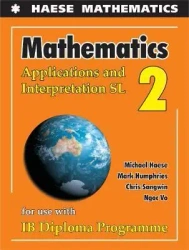
Mathematics: Applications And Interpretation SL 2 - Michael Haese, Mark Humphries, Chris Sangwin
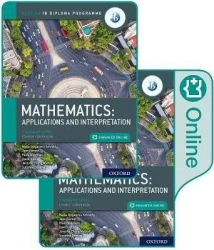
Oxford IB Diploma Programme: IB Mathematics: applications and interpretation, Standard Level, Print - Jane Forrest, Paula Waldman, Jennifer Chang Wathall

Mathematical Studies Standard Level for the IB Diploma Coursebook - Caroline Meyrick, Kwame Dwamena
- Autorzy:
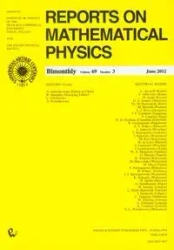
Reports on Mathematical Physics 69/3 /2012
Podręczniki do matematyki po angielsku
Jeśli szukasz podręczników do matematyki po angielsku, to trafiłeś we właściwe miejsce! Na stronie Matfel.pl znajdziesz bogaty wybór książek, które pomogą Ci w nauce matematyki w języku angielskim.
Podręczniki do matematyki po angielsku są idealnym rozwiązaniem dla osób, które chcą poszerzyć swoją wiedzę z matematyki oraz jednocześnie doskonalić znajomość języka angielskiego. Dzięki nim będziesz mógł łączyć ćwiczenia matematyczne z nauką języka, co pozwoli Ci rozwijać się w obu tych dziedzinach jednocześnie.
W ramach naszej kategorii podręczniki do matematyki po angielsku, oferujemy szeroki wybór literatury związanej z naukami liczbowymi. Rozwijając swoje umiejętności matematyczne, nie możesz pominąć tak istotnej kwestii jak posługiwanie się angielskim językiem technicznym. Izolacja od naukowego dyskursu prowadzonego głównie w języku angielskim, może utrudnić Ci dostęp do najnowszych badań oraz publikacji.
Angielskie podręczniki do matematyki
Zachęcamy do zapoznania się z naszą kolekcją angielskich podręczników do matematyki. Pomoże Ci ona zrozumieć matematykę na dużo głębszym poziomie. Książki do matematyki po angielsku wprowadzą Cię w uniwersalny język matematyki, który jest powszechnie używany w środowisku naukowym na całym świecie.
Matematyka podręczniki po angielsku
Oferta nasza obejmuje materiały do nauki matematyki na każdym poziomie zaawansowania. Zarówno początkujący, jak i zaawansowani studenci, nauczyciele i naukowcy znajdą tutaj coś dla siebie. Nasze matematyka podręczniki po angielsku pokrywają szerokie spektrum tematów, począwszy od podstaw matematyki, aż po zaawansowane pojęcia i problemy.
Książki matematyka po angielsku
Zrozumienie matematyki na wyższym poziomie wymaga od Ciebie nie tylko zrozumienia konkretnych pojęć, ale też umiejętności myślenia abstrakcyjnego. Nasze książki matematyka po angielsku pomogą Ci rozwijać te umiejętności. Wykorzystują one język matematyki, który jest uniwersalnym narzędziem komunikacji w świecie nauki.
Każda książka w naszej kolekcji jest dokładnie wybrana, aby zapewnić najwyższej jakości materiały edukacyjne. W naszej księgarni internetowej Matfel.pl, książki do matematyki po angielsku są nie tylko źródłem wiedzy, ale też inspiracji.
Pozwalają na rozwinięcie umiejętności logicznego myślenia, które są niezbędne nie tylko w nauce matematyki, ale także w codziennym życiu. Rozwijając te umiejętności, książki do matematyki po angielsku mogą pomóc Ci nie tylko zrozumieć zasady matematyki, ale także nauczyć Cię, jak rozwiązywać problemy w praktyczny sposób.
Nie czekaj, odkryj nasze książki do matematyki po angielsku już dziś. Niezależnie od tego, czy jesteś początkującym studentem, doświadczonym naukowcem, czy po prostu entuzjastą nauki, z pewnością znajdziesz coś dla siebie w naszej ofercie. Matematyka jest jednym z najważniejszych przedmiotów w edukacji, dlatego warto zadbać o to, aby zarówno nauka matematyki, jak i języka angielskiego odbywały się w sposób efektywny i przyjemny. Książki do matematyki po angielsku dostępne na matfel.pl dostarczą Ci odpowiedniego materiału, który będzie Cię prowadził przez różnorodne zagadnienia matematyczne, a zarazem pomoże w nauce angielskiego.

